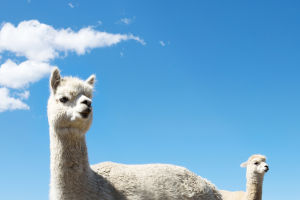Harp seals are famous for their cute fluffy white cubs. Its common name comes from the harp like mark formed on its back after adulthood. Their scientific name means "ice lovers from Greenland".
All harp seal pups are yellow at birth and turn white before their first molt. The pups and most females have silver to gray fur with black spots. Adult males and some females have darker heads and Harp or saddle marks on their backs. The female weighs about 120 kg, with a length of 1.7 meters. The male is larger, with an average weight of 135 kg and a length of 1.88 meters.
Harp seals have a pair of big eyes, each of which has a felt layer, which can help vision in dim light. Females recognize their pups by smell, but seals close their nostrils underwater. Seal whiskers or tentacles are highly sensitive to vibration. They give animals a sense of touch on land and the ability to detect underwater movement.
Harp seals live in the North Atlantic and Greenland Sea. There are three breeding populations, distributed in the Northwest Atlantic, northeast Atlantic and Greenland Sea, but we don't know whether these populations will combine with each other.
However, humans are the main harp seal predators. Historically, these seals have been hunted for their meat, fatty acid rich oil and fur. Today, seal hunting mainly occurs in Canada, Greenland and Norway. This practice is controversial, because the demand for seal products seems to be decreasing, and the killing method is somewhat cruel. In North America, commercial hunting is limited to a certain period of time every year, and there are hunting quotas. Although there are restrictions, harp seals are still of commercial importance, so hundreds of thousands of seals are hunted every year.


